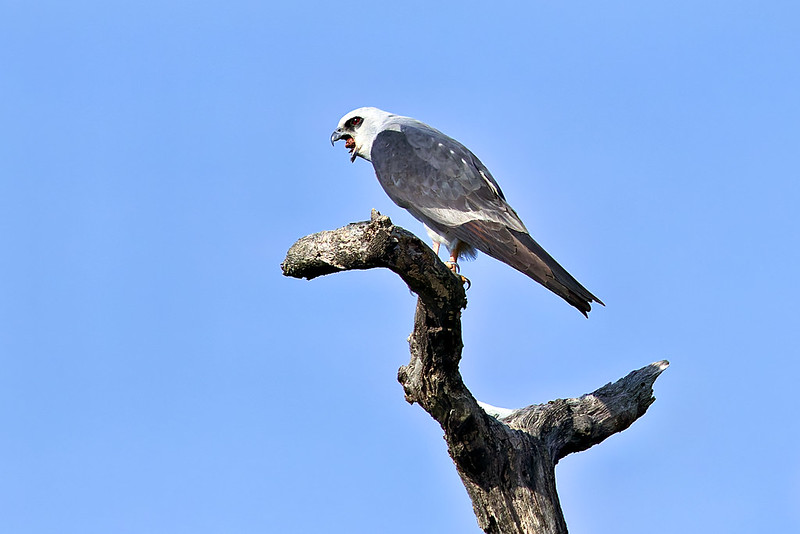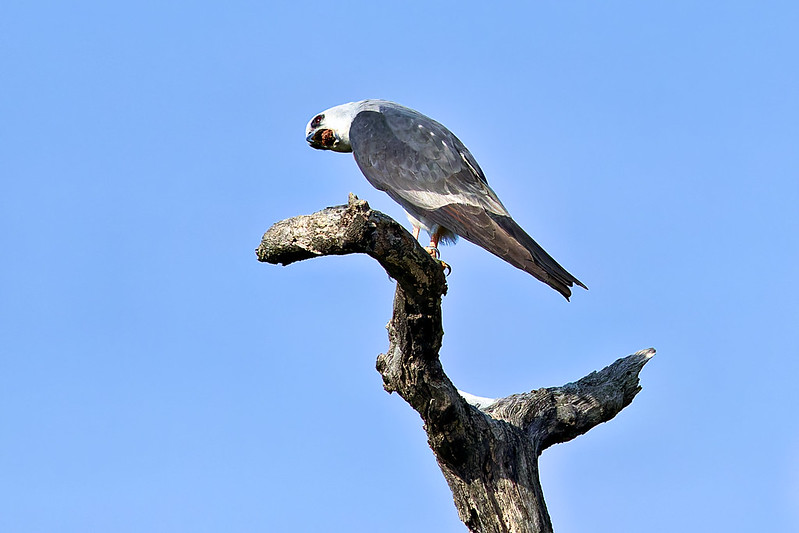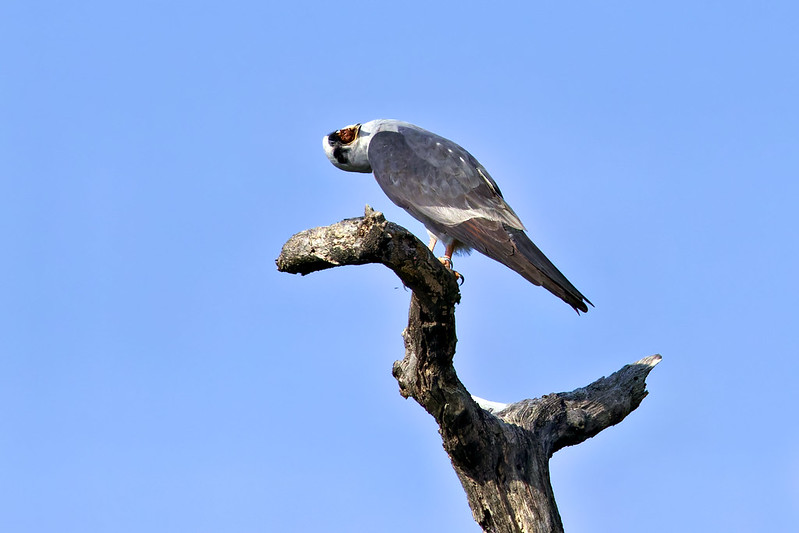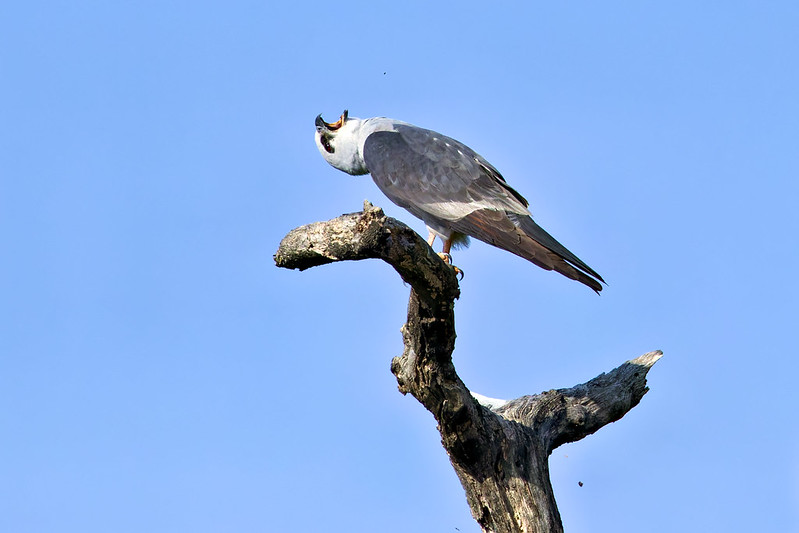I photographed this Mississippi Kite regurgitating a pellet as it perched on a dead limb at the Wichita Mountains Wildlife Refuge in Oklahoma. I’ve seen this species plenty of times over the years, but this was my first time seeing a Mississippi Kite regurgitate a pellet.

Pellet regurgitation is part of how these birds process food. After eating, they spit up the parts they can’t digest, like insect shells and bones. It’s common among raptors and some other birds too.
This kite stayed on the same branch the whole time. While I was photographing, it expelled two separate pellets. It twisted its head a few times for each one, then out they came. The whole process took less than a minute each time, but it was long enough for me to get several shots.




Regurgitation and Digestion in Mississippi Kites
Mississippi Kites feed mainly on insects during the summer. They catch cicadas, beetles, and grasshoppers in mid-air. Since they swallow prey whole, they later regurgitate a pellet filled with indigestible material.
I’ve written before about similar behavior in other birds. One post that stands out is about a Green Heron I saw regurgitate an unusually large pellet. You can read it here: Green Heron Regurgitates Pellet.
Pellets are a fascinating part of bird biology. One of my photos was even featured in a book on the subject. You can read about that experience here: My Photo in Ed Drewitt’s Book. The book, Bird Pellets: The Complete Photographic Guide, is available on Amazon.
If you see a Mississippi Kite sitting quietly and starting to stretch its neck or twist its head, be ready. You might catch pellet regurgitation in action.
Camera Settings
- Camera: Canon EOS R5 Mark II
- Lens: RF 100-500mm F4.5-7.1 L IS USM
- Aperture: ƒ/8
- Focal Length: 500.0 mm
- Shutter Speed: 1/3200
- ISO: 800
- Exposure Mode: Manual
- Exposure Compensation: +1/3
Photographing Pellet Regurgitation in Raptors
If you’re trying to capture a bird regurgitating a pellet, patience is key. Watch for signs like neck stretching or repeated head movements. These clues can help you time the shot just right.

A good catch of interesting behavior. I have a similar shot of a Scissor-tailed Flycatcher doing the same thing.